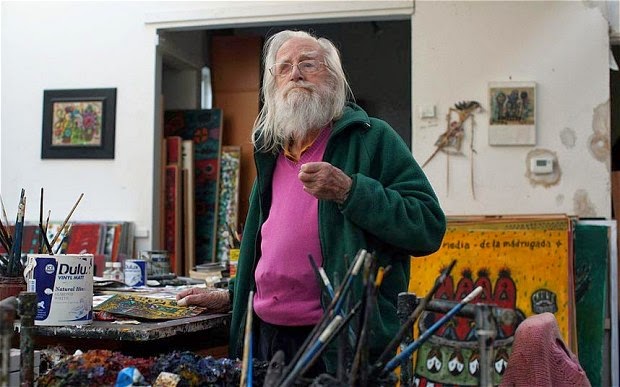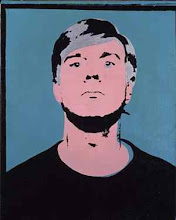 |
| Alan Davie, Patrick's Delight, 1960 |
BP Spotlight: Alan Davie is at Tate Britain 14 April - 28 September 2014; Alan Davie: The Symbol is Neither Rational nor Concrete is at Gimpel Fils, 24 April - 23 May 2014; Alan Davie: The (Wild) Eye of Wonder: EarlyPaintings 1945-1970 is at Alan Wheatley Art, 9 April - 23 May 2014.
Alan Davie, Scottish painter and musician, one of the major figures of British post-war art has died at the age of 93 just days before 3 London exhibitions of his work open. These shows mark a return to visibility of a prolific artist who had largely slipped from public sight. Davie was one of the first British artists to respond to the achievements of the New York Abstract Expressionists. He encounteered the work of Rothko, Pollock and de Kooning at the 1948 Venice Biennale.
Davie's 'action' painting method was built on improvisation techniques developed as a jazz pianist and saxophonist as well as Zen Buddhism. The imagery in his work drew from a wide range of sources and interests including Indian, Aztec and Aboriginal art.
Read The Artist that Time Forgot, an article by Mark Hudson written after a recent conversation with the artist; watch a selection of short videos of Davie discussing his work on the Abstract Critical website and Talking Pictures 14: Alan Davie; read obituaries by Michael McNay, in The Telegraph and at the arts desk.
 |
| Alan Davie, Entrance to a Paradise, 1949 |
 |
| Alan Davie, Bubble Figure No.1, 1954 |
 |
| Alan Davie, Birth of Venus, 1955 |
 |
| Alan Davie, Opus O.521C The Horse that has visions of Immortality No.3,1963 |
 |
| Alan Davie, Ankh for the Serpents, 1967 |
 |
| Alan Davie, Entrance for a Red Temple No.1, 1960 |
 |
| Alan Davie, Fairy Tree No.5, 1971 |
 |
| Alan Davie, Altarpiece for Kali, 1980 |
 |
| Alan Davie, photographed by Ida Kar, 1958 |
 |
| Alan Davie, photographed by Eamonn McCabe, 2014 |


No comments:
Post a Comment